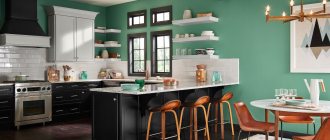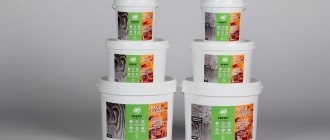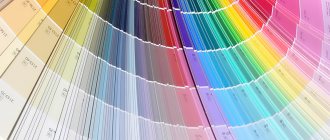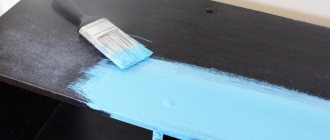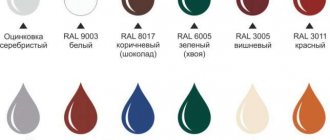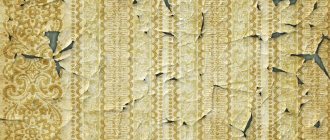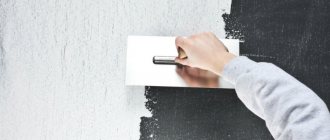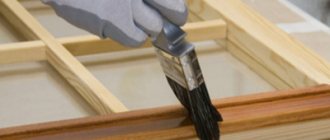Bark beetle facade plaster is deservedly in demand when finishing facades. The walls acquire a creative appearance - such advantages attract both builders and consumers. This coating can be called universal, since it is used both for private homes and public buildings. Additionally, such a surface can be painted, improving both the decorative properties of the finish and its performance characteristics.
Cladding the facade of a house with decorative bark beetle plaster
A little about bark beetle plaster for facades
The material is a universal decorative finish.
The compositions differ in purpose (for interior and exterior decoration), granule sizes (small and large fractions), fillers, level of plasticity and other performance characteristics.
The list of advantages of the type of plaster mixture includes bark beetle:
- creating a strong and durable coating;
- durable application;
- the ability to level the surface due to the structural texture;
- no shrinkage - prevents the formation of cracks and chips;
- resistance to temperature changes;
- moisture resistance of the coating;
- small load on the floors;
- environmental friendliness, because the material is made from natural ingredients;
- wide range of shades;
- resistance to mechanical damage;
- possibility of painting the coating;
- affordable price;
- the presence of several application techniques;
- possibility of multi-color toning;
- resistance to frost and fire;
- no fading of the coating under ultraviolet rays.
Advantages and disadvantages of painting for bark beetles
Painting of decorative bark beetle plaster is carried out taking into account the peculiarities of tinting the porous structure of the treated surfaces.
The dense layer needs to be updated by painting to solve the following problems:
- interior renovation without major renovation;
- increasing the protective characteristics of the plaster layer from high humidity;
- visual expansion of the room (using two-color processing or using triple tinting);
- increased resistance to mechanical damage;
- enhancing the operational characteristics of the layer.
The list of shortcomings that are taken into account before painting a bark beetle includes;
- the complexity of multi-layer tinting due to the textured structure of the base;
- the need to use a set of tools and several application techniques;
- reduced aesthetics when using a single color coating for a complex textured base.
Using alkyd suspension for facade finishing
- Acrylic . The water base makes this composition environmentally friendly, and acrylates, which act as a binder, provide strength and moisture resistance. Durability, a wide range of colors and vapor permeability are also inherent in this type of solution. This is the most optimal paint for bark beetle in terms of its technical characteristics.
A variety of shades of acrylic compositions Tip: if you need to obtain any unusual color, use a special tinting machine. The ability to mix in percentages and many programmed “recipes” will help you create a unique shade and repeat it if necessary in the future. It should also be noted that there is a special bark beetle paint for metal. It creates a similar decorative effect on an iron surface without the use of plaster.
Which paint is best to choose for painting exterior and interior work on bark beetles?
Before painting bark beetle plaster, you need to select the appropriate type of dye, taking into account the purpose (inside the building, facade decoration), and the type of room (bedroom, living room, hallway). They determine what to paint plastered surfaces with, taking into account the operating temperature, air humidity level, etc.
The following types of paints are used in finishing the coating decorated with bark beetle plaster mixture:
- oil;
- alkyd;
- acrylic.
Some manufacturers produce paint products with a bark beetle effect and special compositions for tinting plastered surfaces.
Manufacturers offer decorative paints to create original effects on substrates. You can choose dyes that imitate sand, silk fabric, stone, genuine leather, etc. Compositions are available to imitate aged and patinated surfaces, reproducing silk-screen printing, velvet or velor surfaces.
These products are of high quality and have a high cost due to the inclusion of mother-of-pearl, silk and other particles. It is possible to create an accent wall panel tinted with pearlescent dyes with a metallic sheen.
The paint color scheme is selected according to the type of room:
- for bedrooms, calm neutral shades (sand, light gray) are recommended;
- living rooms are decorated with more saturated color combinations (combinations of blue and ocher, brown, green, burgundy);
- the kitchen is decorated in different shades depending on the design project; it is possible to use bright colors (yellow, orange, green) or sand, dark brown;
- paints of rich shades (bright orange, green, yellow) are used to decorate children’s rooms;
- in a high-tech style office you can combine dark blue, black dyes with a glossy sheen and white, silver shades.
Oily
Can be used for tinting plastered textured surfaces. The paint has a thick consistency, forms bases rich in color, has an affordable price, is economical to use, and is available in a wide range of shades. However, when applying the composition, it is necessary to take into account the sharp odor of the material, low vapor permeability and fire resistance, and the possibility of fading from ultraviolet rays. The material is negatively affected by alkaline solvents and detergents with abrasive particles.
Alkyd
Such enamels can be used to decorate bark beetle plaster coatings indoors and for outdoor work. The material is optimal for facade finishing, because... forms a durable coating, increases the resistance of the base to climatic precipitation and changes in temperature conditions.
The list of advantages of the dye includes high water-repellent characteristics and resistance to various types of detergents. Work is carried out in a ventilated room or in the open air, because... the dye has a pungent odor. The material is affordable and comes in a wide range of shades. Plastered surfaces treated with alkyd paint do not fade and are resistant to mechanical stress, mold and fungi.
Acrylic
Plaster is painted with dyes of this type. The material is optimal for finishing interior spaces and easily tints plastered surfaces.
Acrylic paint has the following advantages:
- consists of environmentally friendly components and is safe to use;
- the acrylates included in the dye increase the strength of the tinted layer and the durability of the plaster;
- has no odor and is used in the decoration of children's rooms and bedrooms;
- has good vapor permeability;
- features a wide range of shades;
- universal and can be used for different types of surfaces.
Acrylic dyes are divided according to their composition into the following subtypes:
- waterproof;
- lightfast;
- washable.
It is recommended to determine which paint to tint the plaster layer, taking into account the purpose of the room, the type of finishing (facade, interior), and base material.
Manufacturers indicate on the packaging the conditions for using paint. The choice is made in accordance with the design decision.
Acrylic paints can be:
- matte;
- semi-matte;
- with a glossy shine;
- silky.
Color palette for painting exterior decorative plaster using the example of Ceresit (Ceresit)
How to decorate the facade of a house if you don’t know what color to choose? In order not to get confused in hundreds of shades from light ash to mustard, you should combine all the colors into groups according to associations. For your convenience, samples are attached to each category that can be used for further wall decoration:
Sand . The color of the plaster ranges from light gray to orange. Natural sandy shades also include dull yellow, pinkish, and peach.
Water . In this category you can find blue, blue, aqua, grayish blue, azure. This is the most limited palette, but it is often chosen for the design of modern houses.
Earth . The main emphasis is on shades of red, brown, purple. Gray is also present in this group. Shades of clay, rocks, sunset color - these formats will visually highlight the architecture of the house.
Forest . The aesthetics of green color is expressed in many interpretations. From light green and light green to mint, ultramarine, pale green, marsh. Gray also comes in several formats as it forms the basis of every color category.
What does painting on the facade give?
Tinting the plaster composition can be done by adding color to the mixture, varnishing or waxing the surface. However, painting the bark beetle in two or more shades allows you to create an original design for the room, increase the strength of the base and the protective characteristics of the coating.
With the help of tinting, you can zone the space without the use of additional finishing materials. You can paint the surfaces with elegant paintings, ornaments, reproduce reproductions of paintings, etc.
What primer to use
Some people believe that priming the surface before painting is not necessary. But applying a primer will increase the service life of the coating, improve the strength properties of the facade, and create an antiseptic layer. It is important to choose the right primer mixture for the job.
Applying a primer will increase the service life of the coating, improve the strength properties of the facade, and create an antiseptic layer.
Adhesive
This type is used to increase the degree of adhesion, and is chosen to cover smooth surfaces. The primer mixture contains small particles that help create a rough surface. The presence of these elements allows you to improve the degree of adhesion of the product to the base.
This type is used to increase the degree of adhesion, and is chosen to cover smooth surfaces.
Deep penetration
Deep penetration primer is distinguished by its ability to deeply impregnate the surface structure in order to create additional adhesion of the layers and improve the strength of the material. This type is good to use if the old plaster coating is to be painted.
Deep penetration primer is characterized by its ability to deeply impregnate the surface structure.
Universal
This type incorporates the functions of all other primer mixtures. So they are able to increase adhesion, increase strength, and form a film coating that helps moisture to be distributed evenly over the facade. They can be used for plastered, adhesive-coated and other coatings.
This type incorporates the functions of all other primer mixtures.
What else you need to know about facade painting
Before painting the bark beetle, experts recommend taking into account the following nuances that simplify repair work:
- To obtain a uniform surface and reduce labor costs, craftsmen advise adding the required color to the plaster mixture to match the tone of the future dye. Painting work will be completed in a short time.
- When purchasing material, it is important to choose certified quality products. Facade paint must be safe. When using licensed products, a durable and safe coating is created.
- Before painting the plastered surface, it is recommended to thoroughly dry the base layer. When applying dye to an undried base, streaks will remain and the coating will be uneven.
Surface preparation
When painting the surface layer, you need to take into account the level of preparation and the nuances that arise due to the uneven texture of the base. The face composition is made with a two-layer texture. The plane imitates the chaotic movement of a bark beetle. The effect is obtained thanks to the mineral particles included in the plaster recipe.
During grouting, the elements move along the base and form uneven depressions. It is these grooves that cause problems when painting facade walls yourself. When the plastering work has been completed and a full-fledged pattern has been formed, it is necessary to erase all unattractive places in the joint area and evenly treat the entire surface layer without strong pressure on the pattern.
Note! Is it necessary to prime the bark beetle before painting? The answer is yes. This technique will improve adhesion and extend the service life of the front surface.
Bark beetle painting technology
You can paint the bark beetle with your own hands in several ways:
- contrasting blocks;
- slightly update the texture emphasizing the previous color scheme;
- using tinting in stripes or areas with contrasting shades to delimit functional areas in a living room or apartment with a studio layout;
- with a patination or gilding effect (this will add luxury) to the interior.
The work is carried out in compliance with the following stages:
- cleaning and leveling surfaces;
- choice of design solution;
- applying a base layer of coloring composition;
- finishing work.
Preparatory work and tools
Before painting the bark beetle in two colors or performing a single-color coating, you need to prepare the surfaces. It is necessary to cover furniture, non-paintable areas of the interior, and lamps with plastic sheeting. It is necessary to vacuum the plastered surface or remove dust and small crumbs with a dry cloth.
You can determine whether the bark beetle needs to be primed before painting, taking into account the quality of the base. If there are any irregularities, treatment is required. The coating is applied evenly, the recesses are filled with soil.
The work will require the following tools:
- rollers:
- a set of brushes (compact, wide);
- sponge;
- spray;
- containers for paint, etc.
The work is carried out in special clothing, the kit includes a respirator, goggles, and gloves.
Applying paint to the wall
Experts recommend first applying the dye to a small area of the wall to check the compatibility of the shades. The main surface tinting is performed after the primer layer has dried. In the living space, painting is carried out with a high-quality acrylic or water-based composition. The material is applied from top to bottom to prevent drips.
It is important to determine which roller is optimal for applying paint. The standard tool used is medium bristle. Wide areas are processed with a roller. Corner and other hard-to-reach areas are painted with a brush.
The first method is to paint the solution
At this stage, the color is added to the plaster solution before applying it to the walls. In this case, you choose the color shade yourself and can even play with its saturation. This technology allows you to paint the furrows of the bark beetle, which are difficult to fill during finishing. The technique for applying the decorative solution itself does not differ from the standard one:
- Using a spatula, the mixture is smoothed over the wall and after 15-20 minutes, when hardening begins, the surface is rubbed in the desired direction
- After complete drying, painting work begins.
For the final coating, the coloring composition can be identical to the pigment that was added to the putty, or you can choose, on the contrary, dark or light shades to contrast the surface. During painting, the rollers are not pressed against the walls so that the paint does not flow into the voids.
Important! Material consumption with this design method is significantly reduced.
Various options for painting the facade of a house using plaster
Several options for coloring bark beetle plaster mixture have been developed.
On the list of those in demand:
- adding color to plaster;
- painting in two layers;
- tinting the primer.
First option: initial tinting of the paint mixture
A simple way to tint is to tint the solution. It is important to correctly assess the proportions of adding dye to the plaster mixture. The color is added to the plaster at the mixing stage. The solution is then applied to the surface. The coating must be thoroughly dried for 2-3 days.
At the next stage, the surface is painted in different ways, including:
- Using paint of the same color scheme with a tinted plaster mixture. It is permissible to use a dye of a darker tone.
- Using a shade different from the plastered base.
- Painting with a roller or a special apparatus with a sprayer to achieve a uniform color of the textured base.
Second option: double coloring
Painting the plaster layer in two colors or monochromatic tinting in two shades looks impressive in an apartment. The technology makes it possible to increase the strength of the base, prevent cracking of paint, and increase the service life of the room.
The work is carried out in stages:
- The first treatment is carried out with a dense thick layer to fill small depressions on the surface.
- Then the surface is blotted with a sponge to remove excess paint.
- After the first layer has dried (readiness time is indicated by the manufacturer on the packaging), re-painting is performed using a fine-pile roller. Painting in two colors should be carried out promptly to prevent the formation of uneven surfaces.
When double painting, you can use the technique of creating textured patterns and blurred spots on a base treated with a mixture of bark beetles.
The work is performed in the following sequence:
- The walls are tinted in the base color.
- Using a sponge or brush, a pattern is created on the surface with paint of a different tone.
- It is possible to use rollers with a stencil pattern to create a textured pattern.
Choosing the right paint
There is no special bark beetle paint for interior plastering work.
You should choose from the classically common options:
- Oily . Despite the brightness and richness of color, this suspension has many disadvantages, including increased flammability, fear of alkaline influences and lack of vapor permeability. Today there are better analogues.
- Alkyd . It is characterized by low price and high resistance to aggressive environmental influences. But the presence of a specific unpleasant odor makes their use indoors not the best idea. Therefore, it is advisable to leave them for facade work.

